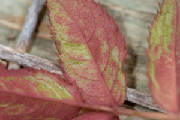|
|
 |
|
Gardening Blog
|
 |
|
|
Tuesday, February 14, 2012
February in the Garden
This winter has certainly made me glad to be living in Florida.
Not to o much really cold weather causing damage in the landscape. We did have one heavy frost in January that
hit those zone 10 plants that we love to plant in our zone 9 gardens. They may have brown drooping leaves
now, but they are most likely still alive. Wait until you begin to see new green sprouts emerging from
the stalks and then prune back to this point. Damaged herbaceous plants like bananas, begonias, gingers
and haliconias can be pruned back to the ground if needed. They should sprout from the roots once the weather
warms. o much really cold weather causing damage in the landscape. We did have one heavy frost in January that
hit those zone 10 plants that we love to plant in our zone 9 gardens. They may have brown drooping leaves
now, but they are most likely still alive. Wait until you begin to see new green sprouts emerging from
the stalks and then prune back to this point. Damaged herbaceous plants like bananas, begonias, gingers
and haliconias can be pruned back to the ground if needed. They should sprout from the roots once the weather
warms.
Mid February is the start of early spring here in Pinellas County and there are some
landscape tasks that should be done now. If you need to have a weed free lawn, now is the time to apply
pre-emergent weed control that will prevent those pesky summer weed seeds from sprouting. It is still a
bit too early to fertilize, so it is best not to use Weed and Feed formulations. Wait until mid March to
fertilize your lawn and landscape plants. Always read the label on any weed control to make certain that
it is compatible with your lawn grass. As your grass begins to grow, mow it at the proper height for the
type of grass you have. Scalping the lawn is never a good idea and can severely damage the turf.
For additional information on lawn care, access the University of Florida/IFAS publications on the Internet at http://hort.ufl.edu/yourfloridalawn/
I generally do not recommend using pre-emergent
herbicides to control weeds in ornamental planting beds due to the possibility of damage to the desirable plants, but Preen
for Southern Gardens should be safe to use if you normally have a lot of weeds sprouting in your beds. Mulch
does a good job of weed control in planting beds. I
f you have roses,
now is the time to do some pruning to shape them. You can remove about a third to one half the height of
the plant. Remove dead or thin spindly canes back to a more robust cane. Prune canes
back to outward facing buds so that the plant will have a more open shape that allows for good air circulation. If your roses are prone to black
spot and powdery mildew diseases, the American Rose Society recommends removing all of the foliage from the plant as well.
Rake up all of the fallen leaves, provide fertilizer and a fresh layer of mulch. Shrub roses like
the Knockout® series do not need such drastic pruning since most of them are disease resistant. buds so that the plant will have a more open shape that allows for good air circulation. If your roses are prone to black
spot and powdery mildew diseases, the American Rose Society recommends removing all of the foliage from the plant as well.
Rake up all of the fallen leaves, provide fertilizer and a fresh layer of mulch. Shrub roses like
the Knockout® series do not need such drastic pruning since most of them are disease resistant.
If you have had problems with Chili thrips in the past, treat the soil around your roses with a systemic pesticide containing Imidicloprid. Always follow the roses with a systemic pesticide containing Imidicloprid. Always follow the
directions on the label
carefully. For more information, access the Univ. of FL/IFAS publication Growing Roses in Florida
at: http://edis.ifas.ufl.edu/ep339.
2:37 pm est
|
|
To subscribe to this blog - click on XML icon.
|
 |
|
|
|
 |
|
|
Pampered Gardeners LLC * Oldsmar, FL * USA * Phone: 727 483-3783 * pam@pamperedgardeners.com
|
|
|
 |

